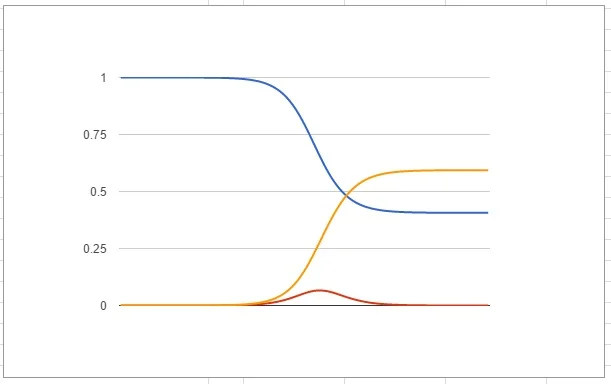Moser's Worm
This problem is similar in structure to the Kakeya Needle from about two months ago and it is also unsolved. Try drawing out a line of length 1. We can draw out curves which let out the same amount of ink onto the page and these too have an arc length of 1. They could come in all sorts of different forms, some wiggly, some crossing over themselves and some almost straight. Each of these curves we could cut out and pile up.
What we want is the smallest area that can fit all of these so called worms in; they can be rotated as you want, they can lie on top of each other, but they can't be turned over. By considering a circle with a diameter of 1 we can immediately bound this problem as having a maximum area of π/4 = 0.78540..., but can we do better?
The first lowering of the bound is had by bringing in some of the unnecessary sides, but leaving the height of 1 going through the middle. This gives a much better solution in the form of a rhombus with 60° and 120°:
Height 1
This gives an area of 0.28868... which is a drastic improvement.
Like with the needle problem these initial improvements represent most of the difference we are ever going to make, but we have slowly lowered this upper bound over time. The most recent is the inside of this shape:
The contour joins O, along B', D, along T, E, along R and then the same on the bottom. The curves T and T' are arcs of circles while the curves B and B' are awful functions that aren't quite straight. You can read it in more detail here if you wish. This shape is very similar to the rhombus from before (but turned on its side which doesn't affect the answer) and has an area of 0.25966... It is the best upper bound that we have discovered so far, but we are unable to prove that it is minimal.








